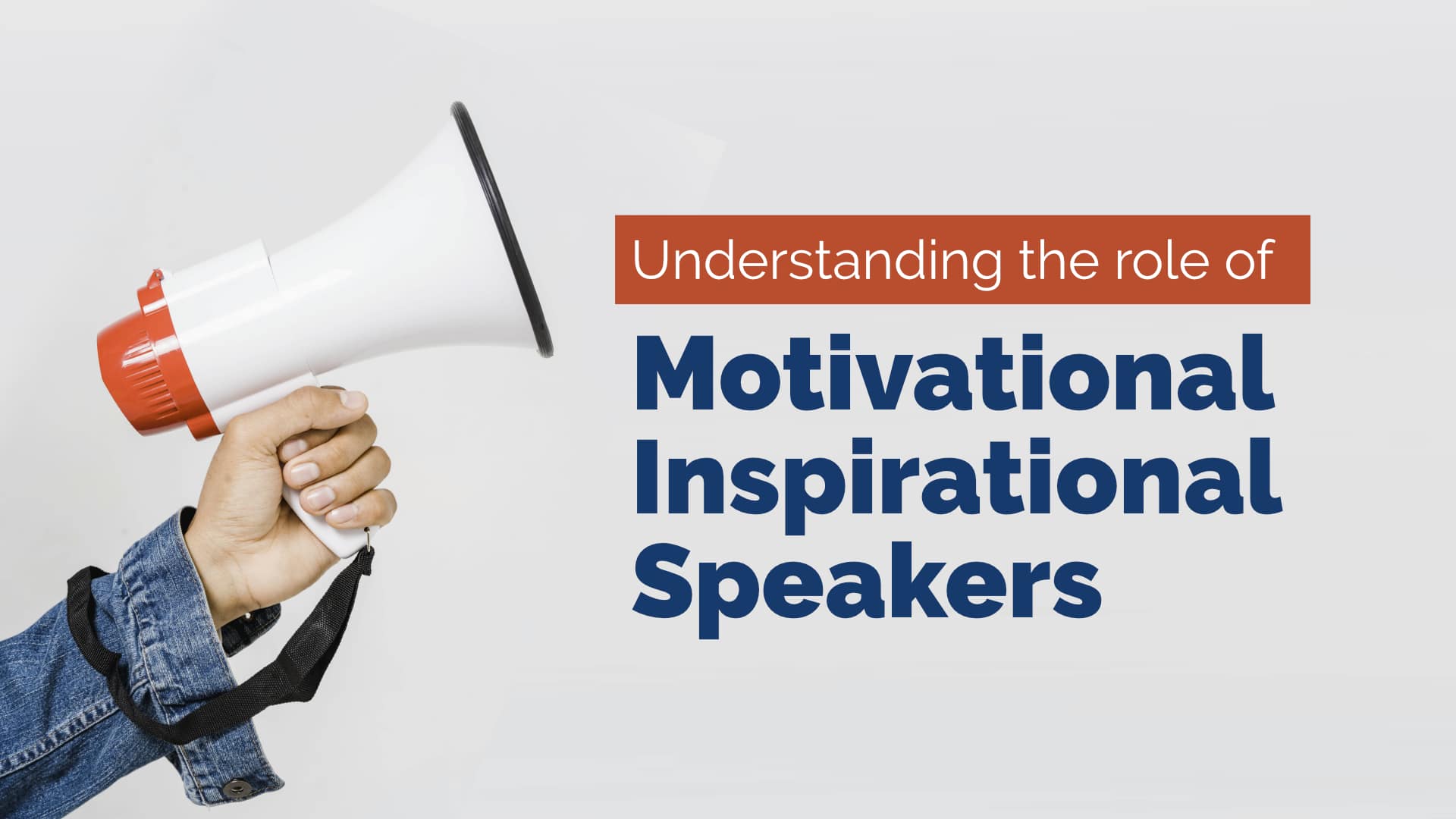January 2, 2024
Understanding the Role of Motivational Inspirational Speakers

Having been involved in motivational speaking and coaching for many years – learning from the masters – I have a deep appreciation for the effect that inspirational words can have on an audience. There simply aren’t enough motivational inspirational speakers out there for today’s fast-moving world.
What Are Motivational Inspirational Speakers?
Motivational inspirational speakers are paid practitioners who employ their own expertise, lived experiential knowledge, and communicative skills in order to inspire and motivate different audiences. These speakers ultimately aim to promote the potential for positive change in the areas of personal growth, professional development and organisational success.
These speakers are often found in various settings, including:
- Corporate events and conferences
- Personal development seminars
- Educational institutions
- Non-profit organizations
- Community gatherings
The whole point of the motivational inspirational speaker is to get the audience to open their hearts and touch the deepest emotions, urging them to reach beyond what they think are their limits and strive for greatness.
The Importance of Audience Engagement
I’ve always known, having spent a lifetime as a a speaker, that audience engagement is everything. Without an engaged audience, a presentation will be little more than a monologue – and a rather dull one at that.
On the other hand, a disconnected audience can derail even the most inspiring speech, with little impact on the audience and little chance for the speech to have any lasting influence.

Key Strategies to Maximize Audience Engagement
Strategy 1: Understanding Your Audience
One of the most important things an inspirational motivational speaker can do is truly know his or her audience. It’s not just about what their job titles are or what industry they’re in; it’s about who they are, what they need, what their challenges and opportunities are, and what they’re truly hoping for.
Before any speaking engagement, I make it a point to:
- Research the organization or group I’ll be addressing
- Speak with event organizers to gain insights into the audience’s expectations
- When possible, conduct pre-event surveys to gather direct input from attendees
It prepares me so that when I give that talk, I’ve worked out in advance how to structure material so it will really resonate with the people I’m talking to, and for whom it’s meant.
Strategy 2: Crafting a Relatable and Powerful Message
It’s easy to get caught up in the speaking – the delivery – the how. However, the most important component of any good speech is the message. As motivational inspirational speakers, we want to craft messages that not only inform but also inspire and motivate. More often than not, the messages that work best are the ones that the audience can relate to.
To achieve this, I rely heavily on:
- Storytelling: Sharing personal anecdotes that illustrate key points
- Relatable examples: Using scenarios that mirror the audience’s experiences
- Metaphors: Employing powerful analogies to simplify complex concepts
These techniques can help to close the distance between the speaker and the audience, so that the message is more likely to land and stick.
Strategy 3: Using Dynamic Presentation Techniques
Dynamic presentation styles are the weapons for every motivational speaker.
In my own presentations, I focus on:
- Body language: Using gestures and movement to emphasize key points
- Voice modulation: Varying tone, pitch, and pace to maintain interest
- Visual aids: Incorporating compelling visuals to reinforce the message
But the most effective strategy I’ve identified is keeping them interactive. I almost always include a challenge, thought-provoking question or fun group activity to keep them attentive. The aim is to make the activity fun, but also to be clear about how it relates to the core message.
A sample icebreaker for a group of marketing executives tasked with finding more customers might be to say to them ‘you’ve been asked to go fishing – how would you go about it?’
The participants would discuss this question in small groups.
This metaphoric challenge serves multiple purposes:
- It breaks the ice and gets the audience interacting
- It relates directly to their real-world challenge of gaining more customers
- It provides a framework for reframing their ideas into actionable strategies
For example, were someone to say ‘ask a fisherman’, we might rephrase it as ‘find a marketing expert who knows the target audience really well’. If someone says ‘throw dynamite in the water’, we can talk about what that might mean in the context of ‘blow your clients away with a big campaign’.
This approach engages the audience as much as possible and directly stimulates the right hemisphere of their brains, starting a creative thinking process that makes people participants in their own learning and motivation. It is a form of what I call focussed daydreaming in my book, The Focus Fix.
Becoming an Inspirational Motivational Speaker
Key Traits of Successful Inspirational Motivational Speakers
As an someone aspiring to be an inspirational motivational speaker, I have come to understand that there are certain traits that make for a successful motivational speaker:
- Authenticity: Being genuine and true to oneself
- Confidence: Believing in your message and your ability to deliver it
- Empathy: Understanding and connecting with your audience’s emotions
- Resilience: Bouncing back from setbacks and learning from experiences
- Passion: Having a genuine enthusiasm for your topic and for helping others
Above all, perhaps, successful speakers recognise that they are always works in progress, students of speech even when they are accomplished practitioners. There’s so much change in the world, and if we want to stay relevant, we have to change with it.

How to Become a Inspirational Motivational Speaker
For all budding motivational speakers out there, here is a step-by-step guide, based on my own story:
- Choose your topic. Pick something you feel strongly about, and make it as broad as possible: life lessons, for example, or the power of self-esteem. This way, you can tailor your presentation to your audience, especially if they are paying good money. I personally like to focus on creativity and innovation as this is my area of expertise.
- Know what to say: know your field, your topic, and the value you can bring to an audience.
- Develop your presentation skills: Take classes, join Toastmasters or some other speaking club, or hire a coach.
- Do it little by little: Get some experience speaking at local events, to community groups or within your organisation.
- Cultivate your personal brand: Create an online platform (website, social media, thought leadership material).
- Network: Connect with other speakers, event organizers, and potential clients.
- Keep improving: Ask for feedback, observe other great speakers, and always look for ways to refine your talk and your message.
Always keep in mind that the key to understanding how to become a inspirational motivational speaker is all about engagement and giving long lasting value to the audience, and not just short lived entertainment. If people are engaged they will listen, so what you tell them must be valuable and long lasting.
Conclusion
To be a motivational inspirational speaker, you have the ability to change someone’s life, inspire action and create success. Your success as a speaker depends on combining an understanding of your audience, the choice of relatable messages, and dynamic presentation skills.
If you want to move others, try these ideas the next time you’re asked to speak. Every great speaker once started where you are. It takes practice, but with time and effort, you can become a force for good in the world.
If you want to further develop your public speaking and audience engagement skills, you can find more articles on this topic here on my website.
